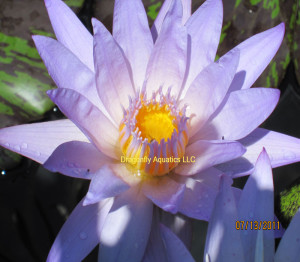 This has been a hot summer so far. Its important if you have fish in your pond that you make sure the water isn't too warm for them. As your water evaporates replenish with cool water. Your fish will be happy!
This has been a hot summer so far. Its important if you have fish in your pond that you make sure the water isn't too warm for them. As your water evaporates replenish with cool water. Your fish will be happy!
The tropical waterlilies sure are blooming up a storm in my pond.
The Albert Greenberg's colors are outstanding this year as are the other waterlilies. I'm not certain if its the hot summer days or just that all the pond plants are happy this year. These were all new plants this year since we just redid our pond so other than the initial fertilizing when I planted them, the first part of June, they haven't been fertilized since. I best get to that so I get as many flowers as possible before summer is over. I know tropical waterlilies last only during the summer but I seem to enjoy them more than the hardy waterlilies because of their colors.
I'm not certain of the identity of this butterfly. I thought perhaps it was a male Eastern Tiger Swallowtail. I'm really not certain, although it sure liked my dwarf crab-apple tree. It came back day after day.....I'm thinking it was the same one.
I know we don't want to think about it but it won't be long and fall will be here and we all know what comes next.....its time for us to be thinking about taking the extra care with our pond plants to make them comfortable for the winter cold. I've noticed the butterflies aren't as plentiful as they had been but occassionally I'm able to catch one.
HARDY BOG/MARGINAL PLANTS
Once your hardy marginal plants begin to brown, usually after the first hard frost, prune back excess foliage and discard any decaying material, so it does not compromise the water quality over the winter months. Potted bog plants such as Pickeral, Thalia Dealbata, and Japanese Variegated Iris should be placed at a sufficient depth to avoid freezing the crown of the plant. Most of the other hardy bog plants can be left as they are and will return the following spring.
Tropical Bog Plants
Many of the tropical bog plants will winter well indoors in a sunny window or with a grow light. They do not need to be submerged in water. Keep the soil constantly moist by placing the potted plants in a tray of water.
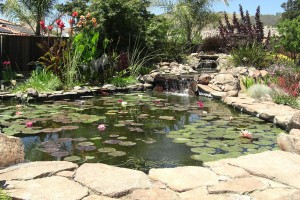 We have alot of plants on sale now so check them out at our store. You still have time to get them planted and established before the cold weather hits us. We're all enjoying our ponds now and the hard labor we've all put into it this spring. We get alot of our customers pictures of their ponds in full bloom which we enjoy. This picture is of a customer's pond in California. We keep trying different night blooming lilies to get them to winter over for her but haven't been real successful. It just gets alittle too cold over the winter for it to survive so this year she's going to try a pond heater and see if it winters over for her that way. All the other plants are doing great! Which is always good to hear.
We have alot of plants on sale now so check them out at our store. You still have time to get them planted and established before the cold weather hits us. We're all enjoying our ponds now and the hard labor we've all put into it this spring. We get alot of our customers pictures of their ponds in full bloom which we enjoy. This picture is of a customer's pond in California. We keep trying different night blooming lilies to get them to winter over for her but haven't been real successful. It just gets alittle too cold over the winter for it to survive so this year she's going to try a pond heater and see if it winters over for her that way. All the other plants are doing great! Which is always good to hear.
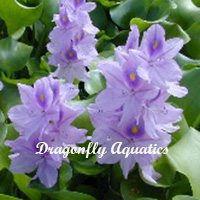 Floating plants such as Water Hyacinth and Water Lettuce are considered tropical and will not survive temperatures below freezing. After the first hard frost, remove them from the pond to prevent them from decaying and adding unwanted debris to the pond.
Floating plants such as Water Hyacinth and Water Lettuce are considered tropical and will not survive temperatures below freezing. After the first hard frost, remove them from the pond to prevent them from decaying and adding unwanted debris to the pond.
Trying to winter them over indoors is difficult. They need to be kept in an aquarium or floated in anything that can hold water. The problem is they lack adequate light intensity. They seem to do well for awhile but by February when they start to grow the natural light is not bright enough to promote proper growth. The water temps need to be at least 70 degrees and they need at least 14 hours of sunlight or equivalent to four fluorescent bulbs held about 12 inches over the water.
When you consider the amount of energy and electricity needed to keep tropical plants alive over the winter its probably cheaper to just use them for mulch in your vegetable garden and buy new ones in the spring.
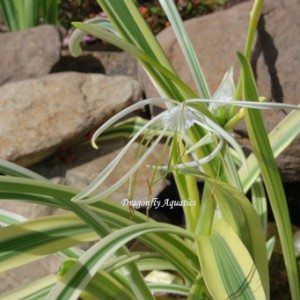 Many of the tropical bog plants will winter well indoors in a sunny window or under a flouresant grow light. They do not need to be submerged in water. Keep the soil constantly moist by placing the potted plants in a tray of water.
Many of the tropical bog plants will winter well indoors in a sunny window or under a flouresant grow light. They do not need to be submerged in water. Keep the soil constantly moist by placing the potted plants in a tray of water.
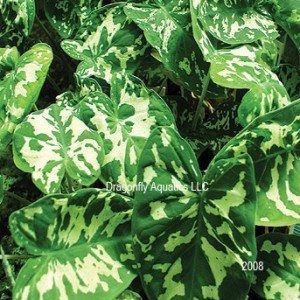 There are several different types of Taro Plants and although they are considered a tropical plant they are one of the easiest plants to winter over as a houseplant. Large leaves and each growing to heights of 2' to 4' high with leaves up to 24". Taro or sometimes called elephant ears, are native to the tropics of Asia. There are more than 300 varieties that are grown in the U.S., especially in Hawaii. They are also grown for a food crop, since all their plant parts can be eaten. You can cook the stems, leaves and flowers while they are young and eat as a vegetable. The leaves are often used to wrap other food with and them steamed.
There are several different types of Taro Plants and although they are considered a tropical plant they are one of the easiest plants to winter over as a houseplant. Large leaves and each growing to heights of 2' to 4' high with leaves up to 24". Taro or sometimes called elephant ears, are native to the tropics of Asia. There are more than 300 varieties that are grown in the U.S., especially in Hawaii. They are also grown for a food crop, since all their plant parts can be eaten. You can cook the stems, leaves and flowers while they are young and eat as a vegetable. The leaves are often used to wrap other food with and them steamed.
But to us ponders we simply love the look and gracefulness of the Taro. It can add a dramatic accent to your pond or container garden. Taros are quite often used as a plant for a container planting. They can tolerate full sun but they prefer to be protected from the afternoon sun. They need to be fertilized regularly and planted in large pots to grow them to their maximum size. You'll have larger leaves and larger plants. Planting zones are 9-11 and require moist soil or water to 6 inches deep.
To winter over a Taro simply bring indoors and keep in a sunny, warm room in a container of water. You can also cut the plant slightly above the tuber and store the dried tuber in coarse vermiculite in a sealed container and replant in the spring. You can also take the plant and let it dry and store it in the pot in a cool, dark spot where it will become dormant until you bring it out again in the spring.
I will feature the different Taros in upcoming plant posts. Stay tuned to the many varieties of Taros available for your container garden or pond.
The picture here is a Variegated Taro (Alocasia amazonica 'Hilo Beauty' . This Taro plant is very stri8king with its lush green leaves that are mottled in ivory. It likes to be just at or slightly above the water surface. Grows in sun to part shade and is Hardy in Zones 9-11. The ideal temperature for year around growth is 65 degrees. In the cooler, but frost free areas it becomes dormant during the winter. You can store the tubers in sand during the winter. Propagation: By division of the tubers if the plants are lifted during the autumn, or just before they come into growth in the spring.
Buy Taro,Variegated,Green,Black,Imperial, here.